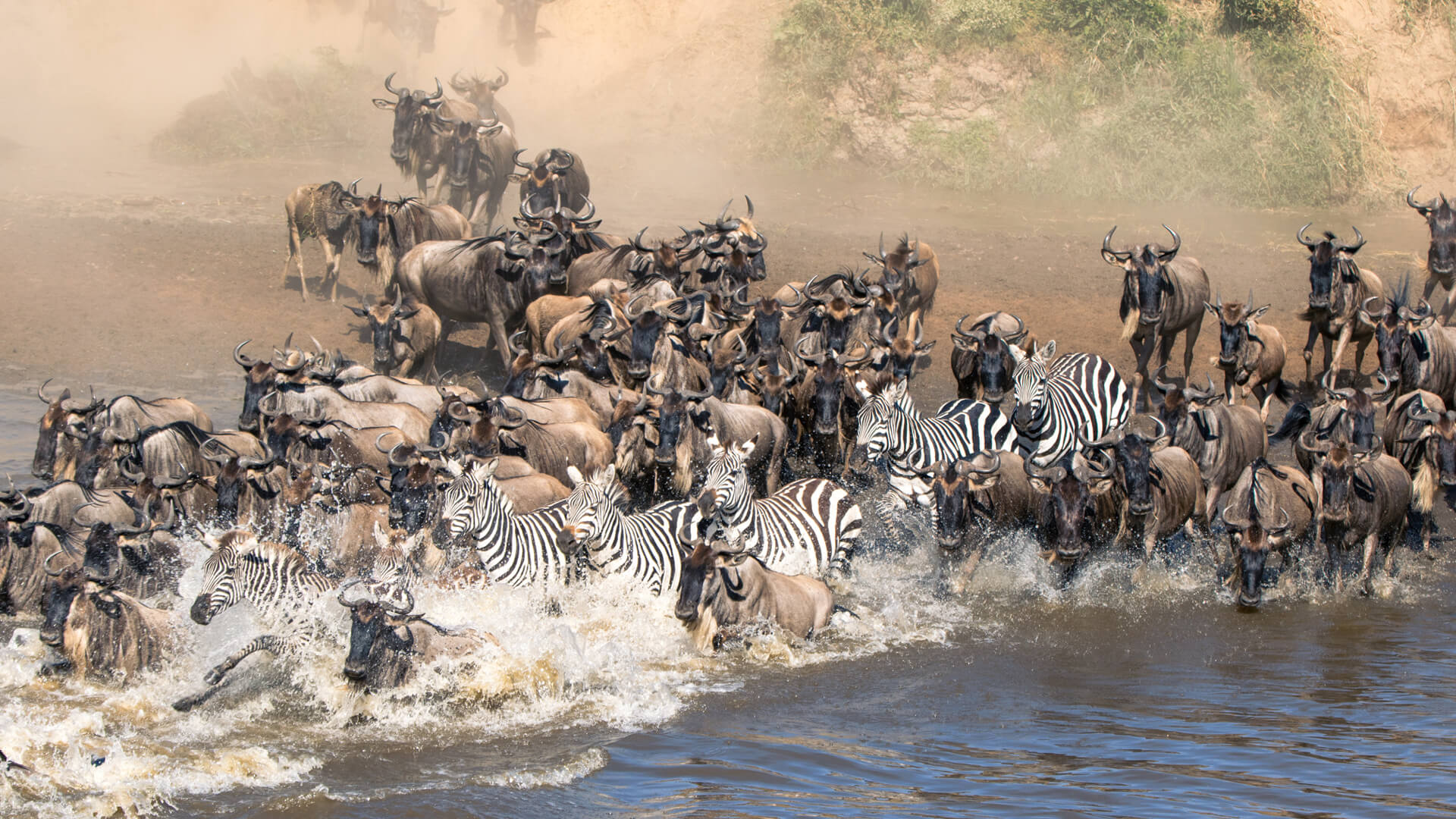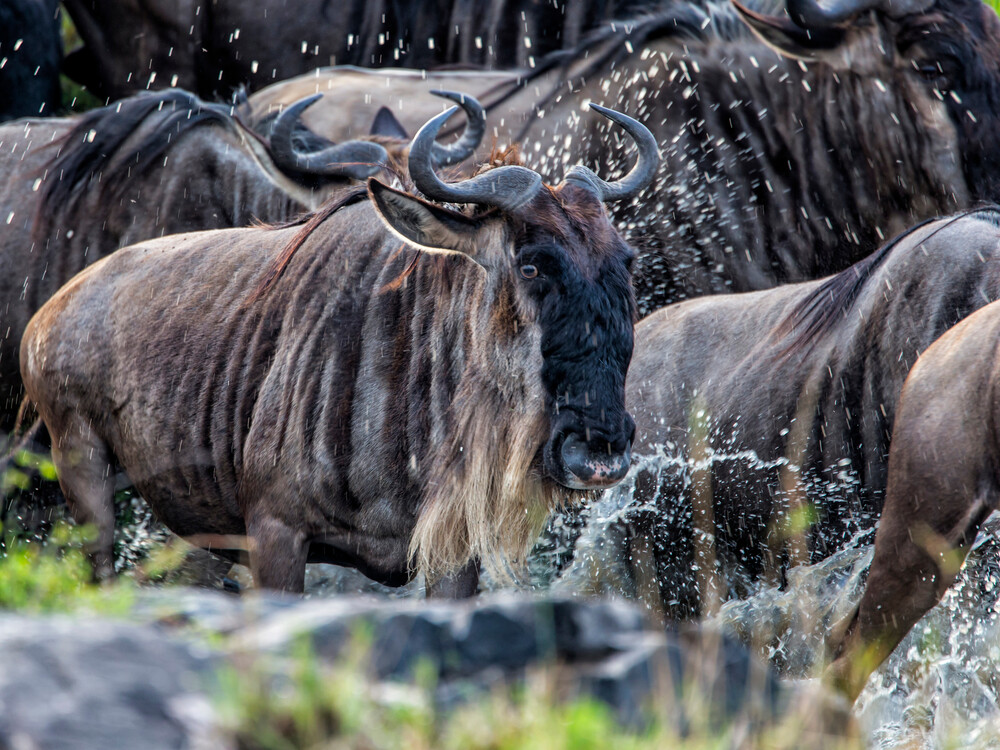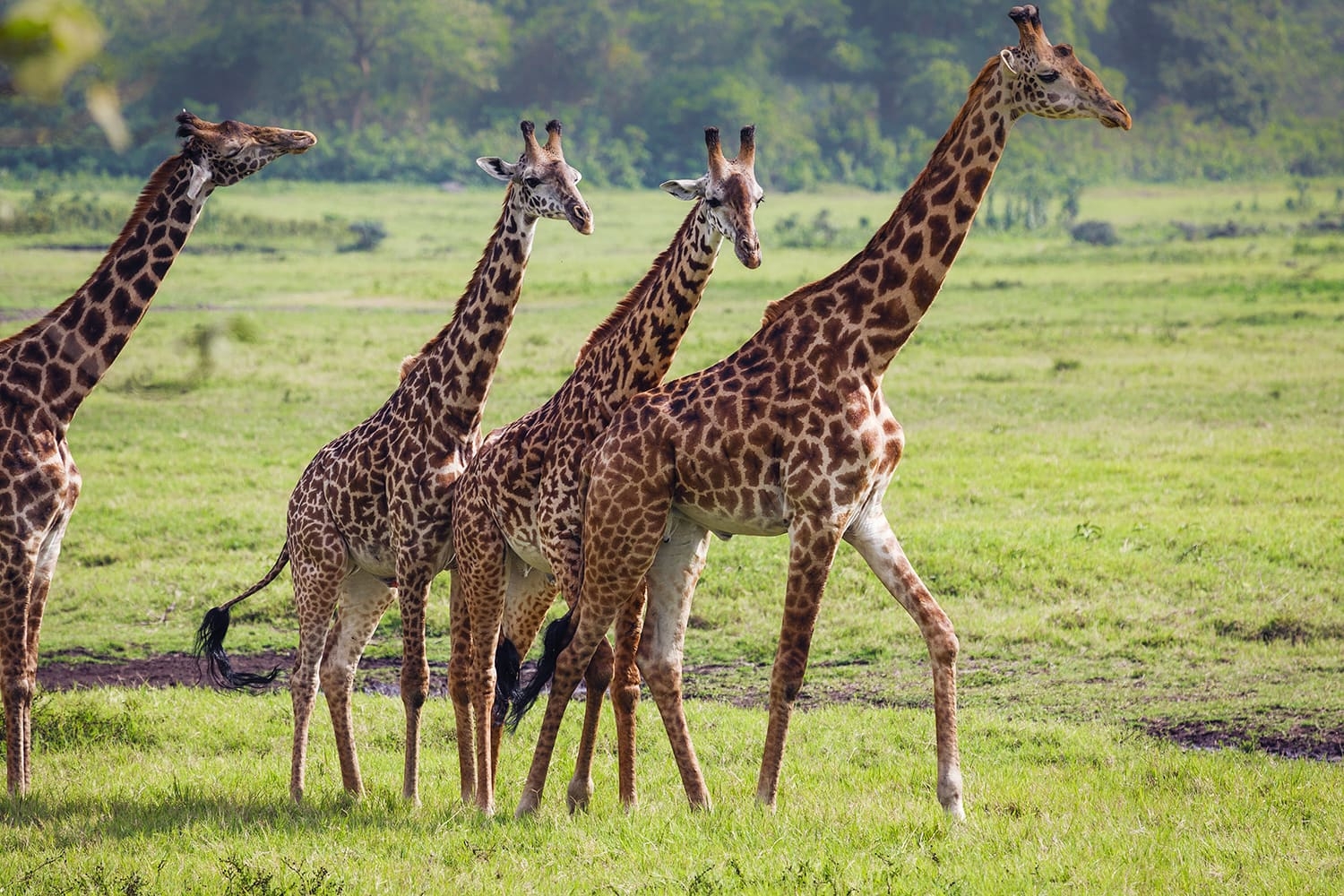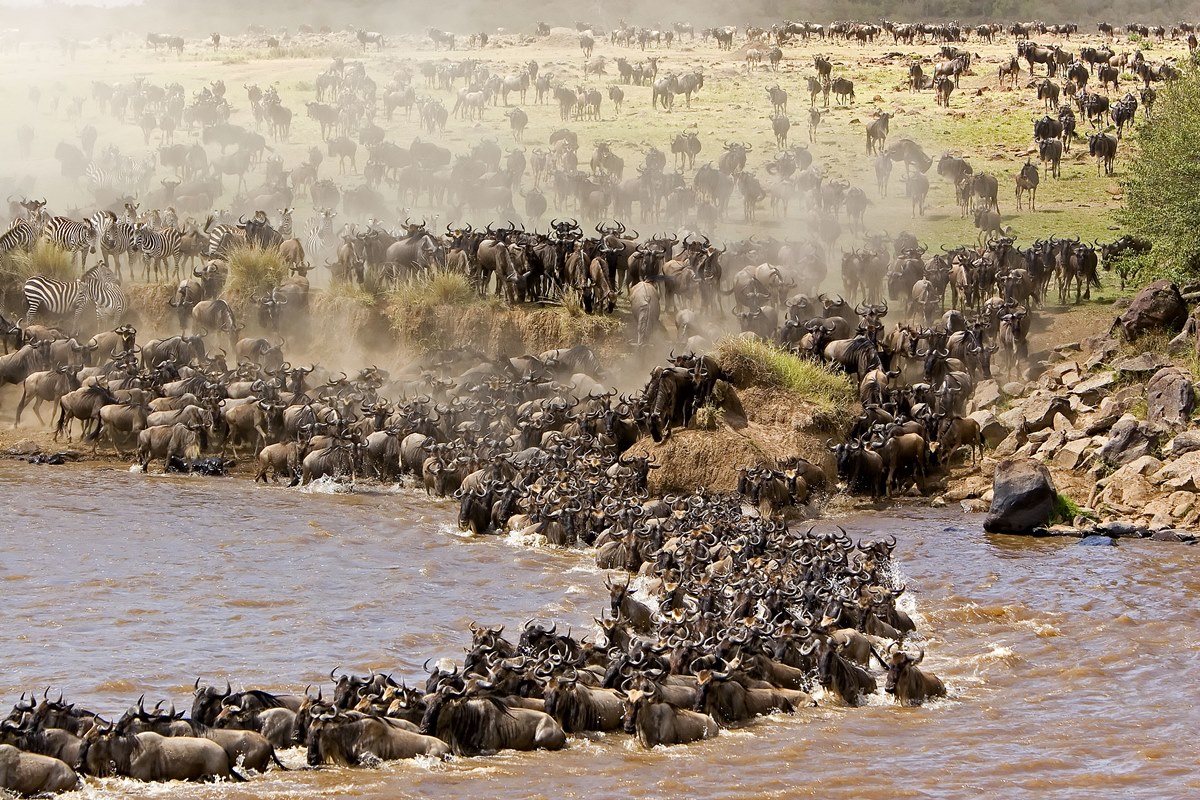Serengeti Great Migration Safaris
Overview
The Serengeti Great Migration is one of the world’s most fascinating natural spectacles, featuring the annual journey of nearly two million wildebeest, zebras, and gazelles as they traverse the endless plains of northern Tanzania and southern Kenya. The heart of this migration beats across the legendary Serengeti National Park, famous for its vast savannahs, rich biodiversity, and dramatic predator-prey interactions. Originating in Tanzania, the migration heads north to Kenya’s Maasai Mara before looping back, chasing the rains and fresh grasses. Guided safaris in open 4×4 vehicles, walking tours, and even hot air balloon rides allow visitors to witness river crossings, calving seasons, and thrilling hunts up close. Besides the iconic migration, the Serengeti teems with lions, leopards, elephants, and countless bird species, making it a year-round safari destination for wildlife enthusiasts and photographers alike. Whether you’re a first-time visitor or a seasoned adventurer, a Serengeti Great Migration safari offers an unparalleled glimpse into the excitement and beauty of Africa’s wilderness.
Month-by-Month Visiting Recommendation
Every month in the Serengeti offers a unique migration experience, with the herds perpetually on the move. From January to March, the southern Serengeti (Ndutu area) becomes the birthing ground, as hundreds of thousands of wildebeest give birth, attracting predators and providing heart-pounding action. April and May are the wettest months; the herds shift northwest as rain-drenched plains support new grass (Central Serengeti), but some roads may become muddy and challenging. June marks the start of the rutting (breeding) season in the Western Corridor, followed by the dramatic and perilous Mara River crossings from July to September in the Serengeti’s north—often considered migration’s highlight, where crocodiles and big cats lie in wait. In October and November, the herds start heading south again as short rains fall, and by December, the vast columns of animals return to the southern Serengeti. Each season has its advantages: calving in early months, river crossings mid-year, and returning herds later on. Consulting with a reputable safari operator ensures your visit matches your migration dreams.

The Best Time to Visit the Serengeti for the Great Migration
The optimal time to witness the heart of the Great Migration depends on what aspects you wish to see. For action-packed drama, including breathtaking Mara River crossings and predator encounters, July to September is unmatched. These months offer the quintessential scenes of wildebeest braving crocodile-infested waters and can be the most popular—and crowded—season for safaris. For those fascinated by the circle of life, January to March is ideal; the Ndutu plains host the calving season, where about 8,000 calves are born each day, followed by intense predator action as lions, hyenas, and cheetahs prowl the area. If you value fewer tourists and lush landscapes, consider April to June, though rains are frequent and some areas may be inaccessible. Overall, the Serengeti delivers unforgettable wildlife encounters year-round, but careful planning gives you front-row seats to your desired migration event. Early booking is crucial, especially during peak migration months, to secure the best camps and guides.




